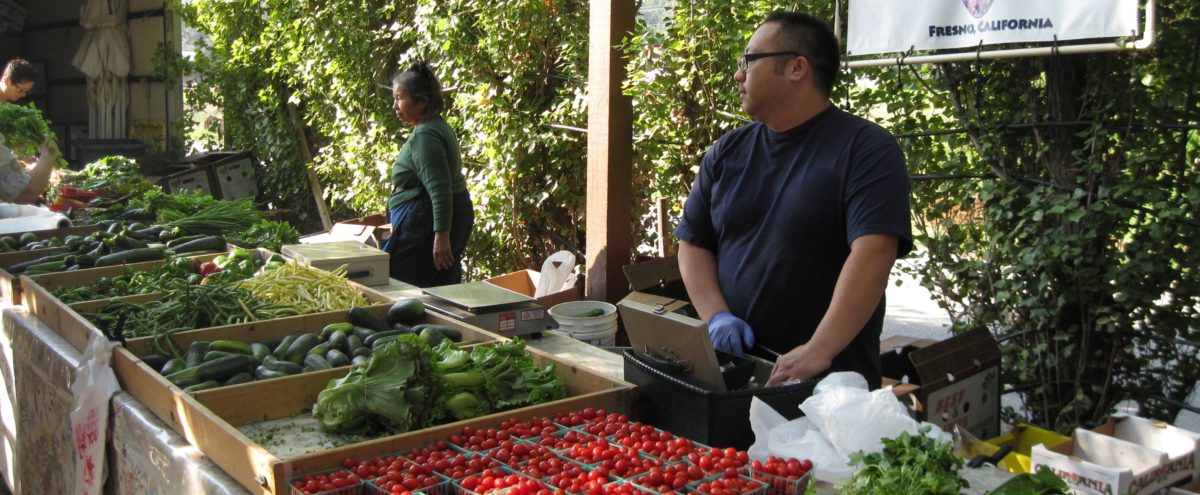
Restaurant owners consistently see access to locally sourced food as the easiest way to ensure that its fresh. File photo
Last week, the International Food Information Council Foundation released its survey into Americans’ food choices. They found that the number of people sticking to specialty diets like paleo, low-carb, gluten-free or ketogenic is on the rise. Between 2017 and 2018, two-and-a-half times more people reported being on a diet.
Keeping up with the changing demands of consumers means providing cooked-to-order methods more than ever before and sourcing food from smaller and maybe less familiar purveyors.
WHO’S THINKING HEALTHY?
Of the 1,009 people ages 18-80 surveyed, 36 percent said they had a specific eating pattern in 2018, compared to 14 percent in 2017. The Food Information Council additionally reported that it was younger consumers, 18 to 34, who were more likely to follow a specific diet.
“The restaurants finally figured out that they need to ride the trend,” said Lisa Herzig, a nutritionist and dietician at Fresno State who works with future chefs in the food science department.
Herzig saw from clients that people are eating out more than ever. In many cases, it’s even cheaper to go out than to cook every meal.
“It’s almost as though their kitchens have shut down,” Herzig said.
What may also be different than times in the past is the income level of people choosing healthy options.
According to Warren King at Food Commons Fresno, a food hub that sells and delivers produce boxes, 10-15 percent of customers are EBT to purchase on a bi-weekly basis.
“The message is certainly getting through to all consumers,” King said. “The price of medical care and drugs is playing a part in changing lifestyles.”
The report by the Food Information Council found that cardiovascular health was predominantly what consumers were looking for at with 20 percent ranking it as their top desired health benefit. It was followed by weight loss at 18 percent and energy at 13 percent. In 2017, only 16 percent were prioritized cardiovascular health, while 32 percent were looking for weight loss and 14 percent sought more energy.
SOURCING THE FAMILY FARMS
For restaurants, the easiest way to capture that clientele is by providing more variety in their fruits and vegetables.
“More now than ever there’s an awareness to dietary needs,” said Robert Snyder III, chef de cuisine at Erna’s Elderberry Restaurant. “We’ve seen a big rise in dietary needs, which has lead us to shift to more quality ingredients.”
Restaurants get those quality ingredients by ordering fresh, which means going straight to the farmer or to smaller purveyors.
“With smaller companies, their outreach is greater because they’re not well-established,” Snyder said.
This increased interest from restaurants in smaller-scale food operations is actually helping to keep many family farms alive, says King.
That growth in family farms may mean more access to food, but the trade-off for restaurants means sacrificing already thin profit margins.
Rocco Paolilli, general manager at Ovidio’s restaurant in Fresno, hasn’t made the jump into the organic label, but says that “Paying the extra cost for fresh vegetables is worth the cost.”
CUSTOMIZING EVERY DISH
By-and-large, restaurants are still places people go to celebrate and many times, people check their diets at the door. But, for restaurant owners, catering to a lot of these self-imposed dietary restrictions means meeting customer satisfaction and making guests feel welcome.
“My dad, he’s the chef and he’s the owner,” Paolilli said. “Whatever you ask him to do, he can do to help you.”
Changing recipes to meet low-sodium needs can greatly alter how that food tastes and so chefs have to learn to adapt.
Ovidio’s has an older clientele. They make their own sauces, gaining more control over what goes into it.
“It challenges our chefs to broaden our horizons,” said Snyder at Erna’s Elderberry House. “If we can’t use flour, what are we going to use? It’ll breed versatility in the market. If you think that a lentil bean bread is better than regular bread, more power to you.”
Around the country, the rise in genomic monitoring allows consumers to find out at the molecular level what they should be eating. People can find what macro nutrients they are missing or should cut out and restaurants are catching on, says Herzig.
“I’ve been to Boston and Seattle and I saw it,” she said. “Albuquerque not so much. San Francisco absolutely. L.A. absolutely.”
For chefs, this means staying ahead of the curve and learning all the new techniques and substitutions that can keep a dish tasting great.
“When I hear vitamins and minerals, I hear food and I’m immediately drawn to that conversation,” Snyder said. “That’s what got me intrigued in it.”
Understanding the differences between salts like fleur-de-sal, sea salt, and Himalayan salt all have unique applications. Substituting ingredients like lentils for flour to avoid gluten also takes know-how. Getting chefs with that know-how often comes with a higher price tag.
“It’s amazing the substitution power in these things,” Snyder said.
Looking to the future, Snyder thinks that the rise in healthier options will hit the less expensive restaurants first. People treating themselves with a $50 dish may be more willing to forego their restrictions.
As Snyder said, “fine dining will always have that wiggle room.”








